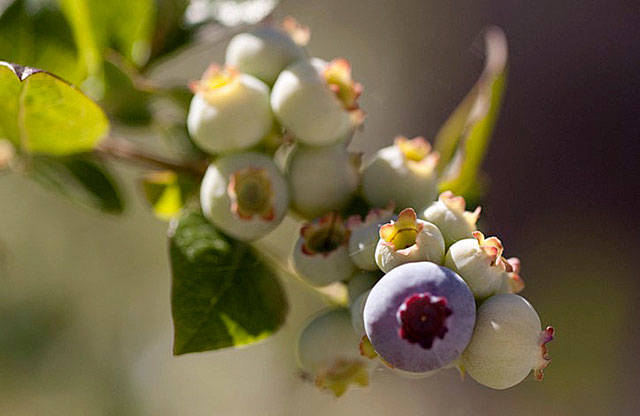Although the harvest of strawberries, raspberries, blackberries and blueberries is over for the year, continued care of your berry patch through the fall and winter will minimize plant loss and ensure a good harvest next year.
Strawberries
After temperatures have dropped below freezing, apply 3-5 inches of mulch such as straw or pine needles. (If you apply mulch before the first frost, you will create artificially warm conditions, and your strawberry plants might start growing instead of going dormant.)
As cold temperatures set in, watch for frost heaving. If strawberry plants are pushed up out of the ground, replant them so that their roots are completely covered with soil.
In spring, remove the mulch when your strawberries show signs of growth such as new leaf emergence. If frost threatens while plants are in bloom, cover them with row cover or old sheets. Put the cover on in early evening and remove it in the morning once the risk of frost injury has passed.
Raspberries
After the harvest, the second-year canes that bore fruit will start to die. Remove second-year canes in late summer or fall, cutting them off at soil level. (Note: Fall-bearing raspberries produce fruit at the top of first-year canes, too.
Remove only the portion of the first-year cane that fruited, not the entire cane, as this type of raspberry will bear fruit again further down on these same canes the following year.)
During late winter, remove all weak, broken, diseased, and insect‑damaged canes and narrow the rows to 12 inches. Shorten the remaining canes so they are about a foot taller than your trellis, and tie them to the trellis.
Blackberries
Like raspberries, second-year canes that bore fruit will start to die after harvest and should be removed. Unless there is a lot of cane disease, delay cutting off canes as long as possible to allow nutrients from the dying canes to move into the crown and roots.
For trailing blackberries only: After you have removed the second-year canes, trellis the first-year canes. If you live at higher elevations (above 400 feet) or in more exposed areas, leave the first-year canes on the ground throughout the winter. Protect the canes with straw and train them onto the trellis in late February after threat of severe cold has passed.
Blueberries
If you had problems with mummy berry, a fungal disease that causes new leaves and flowers to wither and mature berries to shrivel and turn white (called mummies), remove the mummies from the planting and discard. Do not compost. In the fall cultivate the soil around your blueberries about an inch deep to bury any remaining mummies. In early spring, rake the soil around your plants to destroy any developing fungal fruiting bodies.
To protect the superficial roots of blueberries from cold, mulch the plants with bark or sawdust. Because heavy snow can damage the bushes by bending and breaking their branches, gently remove any snow that accumulates before it freezes to limbs and branches. Do not attempt to remove ice encased on branches; let it melt naturally.
Pruning enhances the growth of new canes and removes older canes that are no longer productive. Prune your blueberries in late winter because plant structure is more clearly seen and healing of wounds is better. (See sidebar.)
Regardless of the berry type, clean up your berry planting now. Remove fallen leaves, decaying fruit and weeds. Irrigate plants until the rain returns, providing 1-2 inches of water each week. Do not fertilize your berries again until next spring; applications of nitrogen at this time can stimulate late growth that is prone to winter injury.
Jeanette Stehr-Green is a Washington State University certified, Clallam County Master Gardener.



